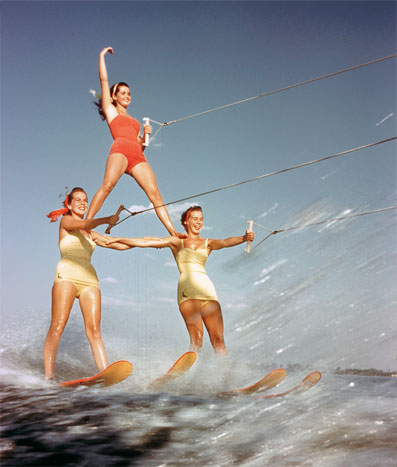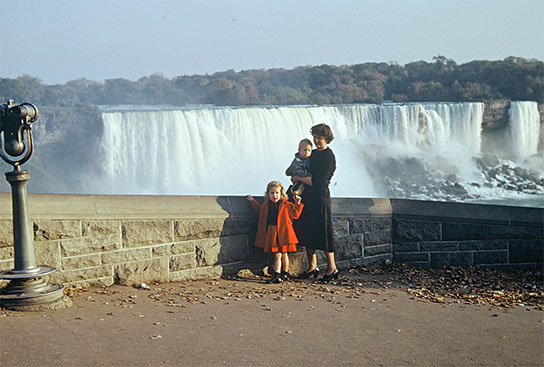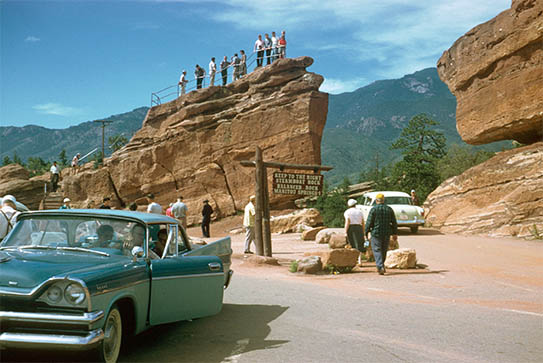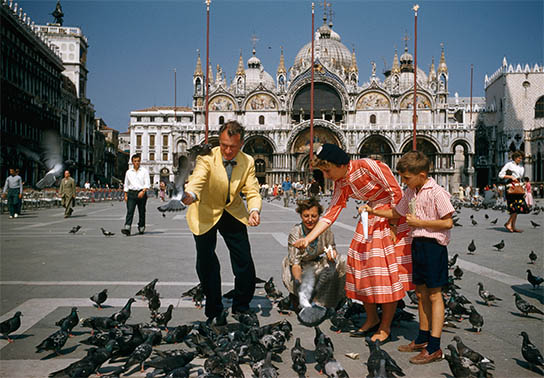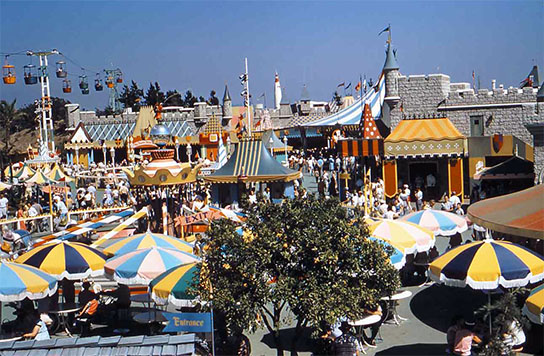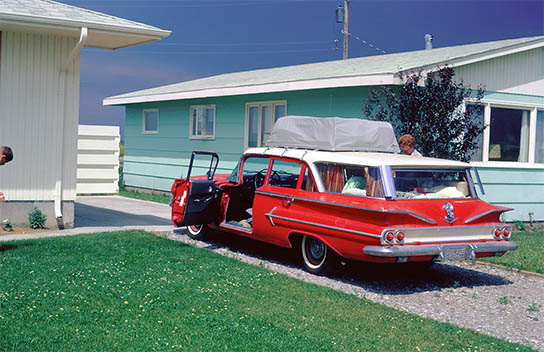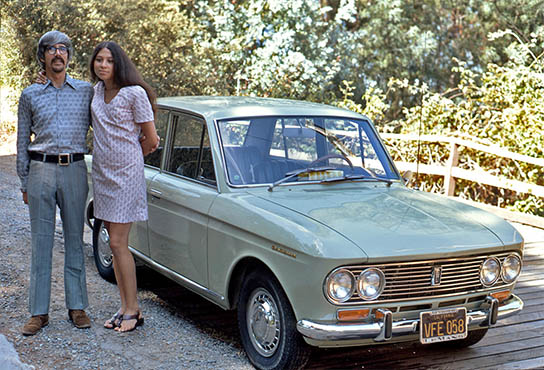Seven water-skiers. Via Dave at the always awesome Shorpy
77
Kodachrome
The American Vacation
This professional souvenir 35mm Kodachrome slide, according to the handwritten annotation, was purchased in the gift shop of Cypress Gardens on 5 Apr 1957. I simply cannot imagine an image that more completely encapsulates the idea of summer vacation – unless it’s this one:
The pyramid.1 Shorpy
Leopold Godowsky, Jr. (27 May 1900 – 18 Feb 1983) and Leopold Damrosch Mannes (26 Dec 1899 – 11 Aug 1964), were chemists and unemployed jazz musicians. By 1917 they were experimenting with color photography and by the 1920s had established a dedicated lab where they worked on perfecting a color transparency film.
Eastman Kodak was so impressed with their early results that they moved the pair to their extensive Rochester facilities to continue their experiments and in 1933 Kodak introduced a subtractive, reversal, 3-color 16mm movie film named Kodachrome. Over the years Kodak would market the film in nearly every format and speed imaginable.
Kodachrome was different from other early color films (e.g. Agaicolor and Dufaycolor) mostly in that it wasn’t really color film at all. It was actually three B&W silver halide layers separated by color filters. The color dye-couplers were introduced during the byzantine, and proprietary, development process.2 The result was an exceptionally sharp, vibrantly-saturated, and nearly archival image.
By the 1950s Americans were full-on car crazy and this new-found middle-class mobility gave rise to the suburbs, the shopping mall, McDonald’s, Howard Johnson’s and the family summer road trip. Parents (meaning Dad) armed with their Contaxes, Pentaxes, or Retinas recorded these trips in record numbers and the color film they used was Kodachrome. No vacation was complete without a post-mortem slide show in the den or the basement.3
Chalmers Butterfield. Shaftsbury Ave from Picadilly Circus, London. 1949. Wikimedia Commons
Walter Reed. Niagra Falls from Ontario, CA. 16 Oct 1950. Leon Reed
Chalmers Butterfield. Garden of the Gods, CO. ca.1950s
Ardean Miller III for NG. The Millers feeding pigeons in St. Mark’s Square, Venice. 1957
Disneyland. Late 1950s. Gorillas Don’t Blog
Return after 3 weeks Vacation, Great Falls, MO, 27 Jun 1964. Shorpy
Hugh Mason Ayer. Poolside at Howard Johnson’s, Austin, TX, 1967. Shorpy
Man + women + Datsun 410 = trifecta of 1970s awesomness. Larkspur, CA, Aug 1971. Shorpy
Over it’s 74-year life Kodachrome would be used by both professionals and amateurs. It captured some of the most important events of the 20th century, including the Hindenburg disaster, the first ascent of Mt. Everest, the coronation of Queen Elizabeth II and the assassination of President Kennedy.
The rise of the one-hour print, then competition from other slide films (notably Fuji’s Velvia), and finally the digital revolution severly curtailed sales of Kodachrome. By the mid-2000s Kodak was coating just a single run of the film each year and could no longer afford to provide the complex chemistry. On 22 Jun 2009 they announced that they would cease manufacturing the film and the only remaining processing facility, Dewayne’s Photo in Parsons, Kansas, announced that they would cease processing it at the end of 2010.

Kodachrome 64/PKR 120. Emulsion 33 005 36. Exp: 04/1988, but has spent it’s entire life in a freezer
1. I’ll just go ahead and say it: the girl in red at the top of the pyramid may be one of the most triumphant poses in the history of photography.
2. The film consisted of three layers of standard B&W silver halide layers suspended between red, green and blue color filters. The development process, which relied on Kodak’s chemicals and equipment, replaced the developed silver salts with synthetic cyan, yellow and magenta dyes resulting in a full-color image. It was decidedly not the kind of chemistry that you could do at home.
Kodak changed the processing procedure several times, first in early 1939, then to the K-11 process (named after the number of processing steps) in 1955, then K-12 in 1961 and finally K-14 in 1974. Here is a schematic of the K-11 process from Linus Pauling’s classic General Chemistry (2nd edition. San Francisco: Freeman, 1958):
3. True story: Your humble narrator sat through many family slide shows as a child, which, on special occasions, was accompanied by popcorn from an electric popcorn maker* we received from our Aunt. In the early 1970s we had a garage sale and my Dad used the entirety of the proceeds to buy the “family” a Bell & Howell Slide Cube projector. Not a reliable Kodak Carousel, but a Slide Cube. I know.
* Before the electric popcorn maker I remember my Mom making popcorn in a cast iron skillet on the stove. I still think this is how popcorn tastes best
2 Dec 2010 ‧ Photography

